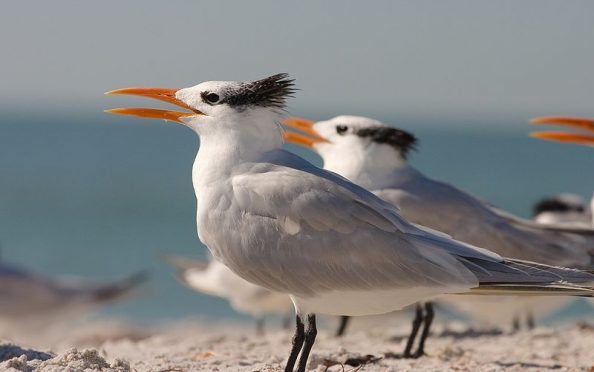Aberdeen scientists have helped to identify a “new” species of bird.
The Royal Tern, a tropical seabird, was originally thought to have two subspecies, one found in the Americas, and the other in parts of West Africa.
But scientists at Aberdeen University used DNA analysis to show that they are not separate species but actually two distinctive birds.
The research team, in collaboration with other scientists from universities of Montpellier and Hull, analysed DNA sequences of feathers and remains of West African Royal Terns from Mauritania and from islands off the Tanji Bird Reserve in The Gambia.
This process, involving state of the art software and tools, allowed them to compare the bird’s DNA with all other birds in a huge online database. It is the first time anyone has ever sequenced the West African Royal Tern.
While wildlife conservation teams in The Gambia have long suspected that the Royal Tern is part of two species, the discovery could have huge consequences as its population has been threatened by eroding breeding grounds due to climate change and human activity.
Professor Martin Collinson from the university’s Institute of Medical Science said: “This research should have an impact on the West African Royal Tern’s conservation status. The breeding grounds in The Gambia and Senegal have been massively eroded by storms and the encroaching human population, so the West African Royal Tern is under threat. Conservationists in The Gambia can now take this information to their government and potential donors, and call for help to protect this West African endemic species.
“It’s information that can inform conservation priorities. There is a limited pot of money and information such as this helps determine where it should be allocated. It is important to direct conservation funds to preserve the maximum amount of genetic variation and genetic biodiversity, in addition to understanding the inherent societal, cultural and economic importance of the birds themselves.”
The recent findings have been published in the Biological Journal of the Linnean Society and research will be presented to international conservation authorities in a bid to have the conservation status of the birds reevaluated.










